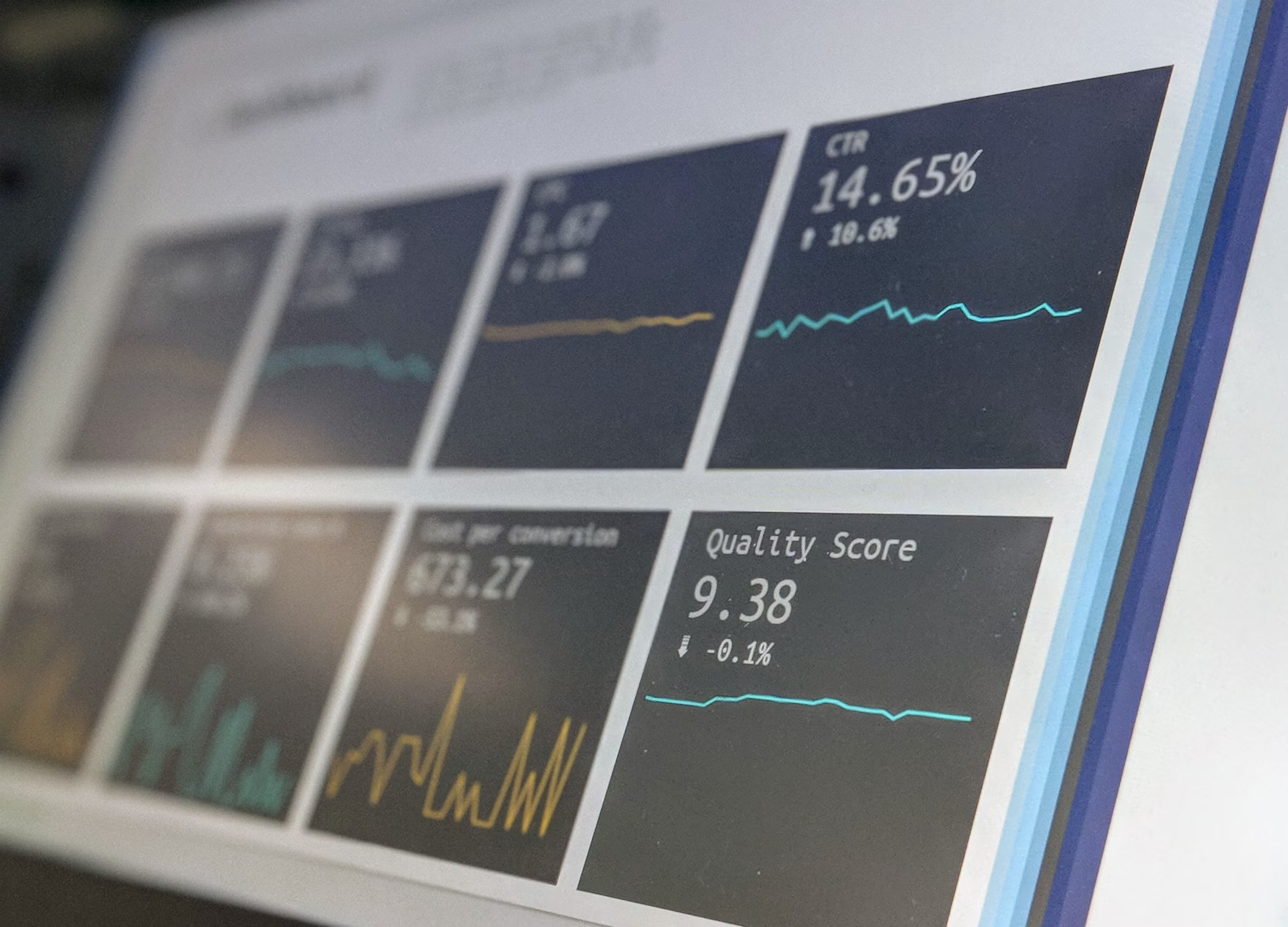Recent SEC Emphasis on KPIs and Other Metrics
Discover key SEC guidance on KPIs in MD&A, including disclosure requirements, common examples, and insights from recent SEC comment letters.

Background
In the year ended June 30, 2024, the SEC issued approximately 1,700 comment letters to registrants, the highest volume in recent history. Amid this rise in SEC correspondence, management discussion and analysis (MD&A) has emerged as the most frequent comment area, with at least 34% of recipients receiving comments from the SEC about MD&A1. The comments generally cited Item 303 of Regulation S-K (S-K 303), which is the relevant literature governing MD&A disclosure requirements.
MD&A is a central component of financial disclosures. According to S-K 303, “The objective of the discussion and analysis is to provide material information relevant to an assessment of the financial condition and results of operations of the registrant.” MD&A serves to augment shareholders' understanding of the registrant’s results and processes, giving shareholders the opportunity to get direct analysis and comments on financial performance from management's perspective.
One of the most common subjects discussed in 2024 MD&A-related comment letters was how companies present and explain Key Performance Indicators (KPIs) or other metrics within the results of operations section2. In 2020, the SEC issued disclosure guidance specifically for KPIs and other metrics in MD&A with its interpretive release No. 33-10751 (“Release33-10751”). Since then, the SEC has formally expected registrants to disclose KPIs and other metrics, along with necessary details and context, when they are material to an investor’s understanding of the company’s financial condition and operational results.
This article explores what KPIs are, discusses what MD&A disclosures the SEC expects companies to include for them and why, and provides real-world examples of SEC correspondence with registrants regarding their KPIs in MD&A.
What Are KPIs and Other Key Metrics?
KPIs and other key metrics are numerical measures used by a company’s management to monitor its financial and operational performance. Because MD&A is intended to give investors insight into how management views the company’s results and future cash flows, KPIs can play a critical role in this section of a company’s filings.
For example, KPIs can highlight what management considers most important when measuring the company’s performance internally. They can also be industry-specific and allow investors to compare operational trends across firms within the same sector. For instance, an investor focusing on retail companies might look at same-store sales to see growth independent of new store openings, while an investor interested in software companies might watch for average revenue per user to understand how effectively each company is generating revenue from its customer base. Overall, KPIs can provide useful financial or non financial information not explicitly included in the financial statements. Here are some examples of KPIs that could appear in MD&A:
Examples mentioned by the SEC in Release 33-10751:
- Operating margin – shows profitability after operating expenses
- Same-store sales – reflects growth independent of new store openings
- Sales per square foot – measures efficiency of retail space
- Average revenue per user – indicates customer monetization trends
- Total subscribers – shows reach and scale of a subscription model
- Number of data breaches – highlights cybersecurity risk exposure
- Total energy consumed – tracks sustainability and cost efficiency
Other common examples:
- Free cash flow – shows cash flow available after capital expenditures.
- Churn rate – measures customer cancellations over a period
- Backlog – indicates contracted revenue not yet recognized
- Annual recurring revenue – reflects predictability of subscription-based income
- Inventory turnover – shows efficiency in selling and replacing inventory
What Disclosures Does the SEC Expect for KPIs?
In Release 33-10751, the SEC emphasized its expectation that MD&A should include information managers themselves use to run their companies when it is material to investors. The SEC notes that such material information can include KPIs. However, when management discloses KPIs, the SEC looks for specific accompanying disclosures to ensure the KPIs are not misleading.
Step One: Identify the Type of KPI
First, management must determine if a KPI it is presenting is a GAAP metric, a non-GAAP metric, or neither:
- Some metrics do not conform to either framework.The SEC sets out the general disclosures for these in Release 33-10751.
- A GAAP metric is derived solely from measures defined by GAAP.
- A non-GAAP metric uses one or more non-GAAP measures. Non-GAAP measures are created by adjusting a GAAP measure (such as net income) to exclude items normally included under GAAP or include items normally excluded under GAAP.
- Some metrics do not conform to either framework.The SEC sets out the general disclosures for these in Release 33-10751.
The following table summarizes different types of KPIs, how they differ, and their disclosure frameworks:
Step Two: Provide Disclosures for KPIs
When a company discloses any KPI, including one that is neither subject to the GAAP reporting framework nor the non-GAAP disclosure guidance, the SEC’s baseline expectation is for the company to include a clear explanation of:
The SEC makes it clear that regardless of the type of KPI a company is disclosing, it should clearly define each KPI, explain its purpose for investors, and describe how management uses it. This underscores the SEC’s priority: ensuring that KPIs or other metrics provided within MD&A are meaningful and not misleading to investors.
Examples from Recent SEC Comment Letters
Example 1: Omission of KPIs Used in Earnings Calls (Bandwidth, Inc.)
In a 2024 comment letter to Bandwidth, the SEC questioned why the company was not disclosing “average annual revenue per customer” as a KPI in the MD&A section of its public filings when management discussed this metric in several recent earnings calls4. The SEC specifically pointed the company to S-K 303 and Release No. 33-10751, which mandate material metrics used to manage the business to be disclosed inMD&A along with necessary context to help investors understand them. In response, Bandwidth agreed to include this KPI in its MD&A beginning with its 2024 10-K filing.
This example demonstrates that failing to disclose KPIs when management openly uses them to manage its business creates compliance issues under S-K 303. Thus, if management highlights a KPI in investor communications, the SEC will expect to see the same KPI properly disclosed in the company’s MD&A filings.
Click here to read Bandwidth’s correspondence with the SEC
Example 2: Inadequate Explanation of KPI Methodology and Use (i3 Verticals, Inc.)
In a 2025 comment letter to i3 Verticals, the SEC requested further information about the metric “annualized recurring revenue,” which the company had disclosed in a previous filing. The SEC stated that it “appears to be a metric,” and therefore needs accompanying disclosures describing how i3Verticals calculates it, why it is useful to investors, and how the entity’s management uses it to manage the business5.
In response, i3 Verticals provided proposed disclosures that describe how the company calculates the metric by adding up all recurring revenues (excluding one-time occurrences) within certain categories recognized during the quarter and multiplying the result by four to annualize it. The proposed wording also explains that the metric helps management understand the company’s financial condition and provides investors with insight into its sustainable revenues.
This example demonstrates how the SEC is seeking to protect investors by enforcing the expectations laid out in Release 33-10751. Entities that publicly present metrics in MD&A should be prepared to articulate the KPI’s methodology, its usefulness to investors, and its internal use by management.
Click here to read i3 Vertical’s correspondence with the SEC
Conclusion
The SEC has intensified its focus on the completeness and quality of MD&A, including KPIs and other metrics.S-K 303 and Release 33-10751 provide guidance on disclosures designed to give shareholders meaningful insight into metrics that management uses to run the business and assess future earnings potential. Public entities can view these disclosures as an opportunity to enhance investor understanding of management’s perspective and highlight material information not captured in the financial statements.
References
1. EY SEC Reporting Update, Highlights of trends in 2024 SEC staff comment letters
2. EY SEC Reporting Update, Highlights of trends in 2024 SEC staff comment letters
4. Bandwidth Comment Letter Correspondence with SEC Regarding KPI Disclosure
5. i3 Verticals Comment Letter Correspondence with SEC Regarding KPI Disclosure
Deloitte Roadmap: SEC Comment Letter Considerations, Including Industry Insights (November 2024)
Deloitte On the Radar: Non-GAAP Financial Measures and Metrics


.jpg)